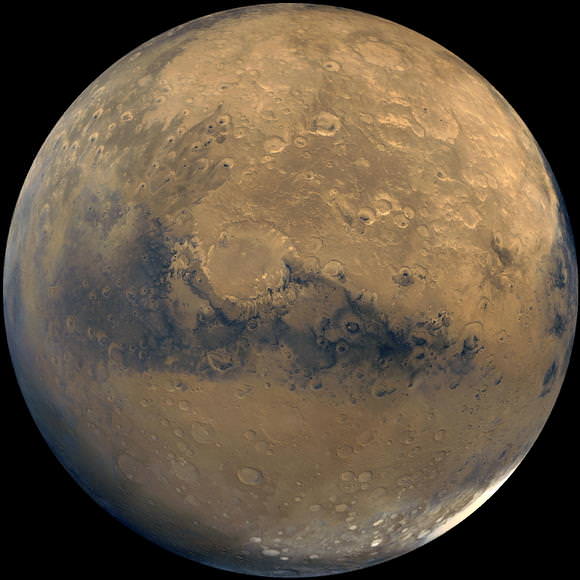[/caption]
The famed Drake equation estimates the number of technologically advanced civilizations that might exist in our Galaxy. But is there a way to mathematically quantify a habitat’s potential for hosting life?
“At present, there is no easy way of directly comparing the suitability of different environments as a habitat for life” said Dr. Axel Hagermann, who is proposing a method to find a “habitability index” at the European Planetary Science Congress.
“The classical definition of a habitable environment,” said Hagermann, “is one that has the presence of a solvent, for example water, availability of the raw materials for life, clement conditions and some kind of energy source, so we tend to define a place as ‘habitable’ if it falls into the area where these criteria overlap on a Venn diagram. This is fine for specific instances, but it gives us no quantifiable way of comparing exactly how habitable one environment is in comparison with another, which I think is very important.”

Hagermann and colleague Charles Cockell have the ambitious aim of developing a single, normalized indicator of habitability, mathematically describing all the variables of each of the four habitability criteria. Initially, they are focusing on describing all the qualities of an energy source that may help or hinder the development of life.
“Electromagnetic radiation may seem simple to quantify in terms of wavelengths and joules, but there are many things to consider in terms of habitability,” Hagermann said. “For instance, while visible and infrared wavelengths are important for life and processes such as photosynthesis, ultraviolet and X-rays are harmful. If you can imagine a planet with a thin atmosphere that lets through some of this harmful radiation, there must be a certain depth in the soil where the ‘bad’ radiation has been absorbed but the ‘good’ radiation can penetrate. We are looking to be able to define this optimal habitable region in a way that we can say that it is ‘as habitable’ or ‘less habitable’ than a desert in Morocco, for example.”
The pair will be presenting their initial study and asking for feedback from colleagues at the European Planetary Science Congress. “There may be good reasons why such a habitability index is not going to work and, with so many variables to consider, it is not going to be an easy task to develop. However, this kind of index has the potential to be an invaluable tool as we begin to understand more about the conditions needed for life to evolve and we find more locations in our Solar System and beyond that might be habitable.”
Source: Europlanet



